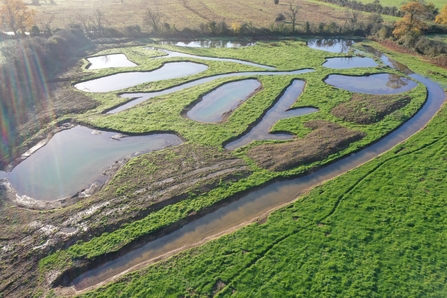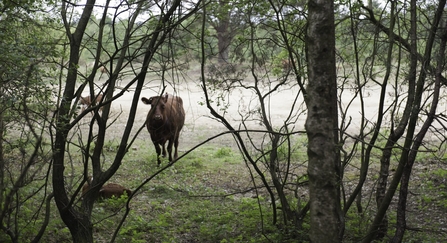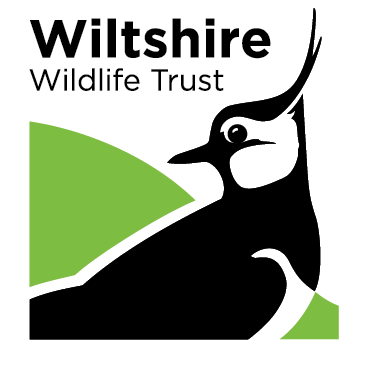Wiltshire Wildlife Trust has secured a £100,000 grant from the community energy enterprise, Wiltshire Wildlife Community Energy (WWCE), an organisation with which the Trust has been closely linked since its inception in 2013. The grant is the largest ever awarded by the enterprise to a single organisation and will support habitat enhancements our Lower Moor Farm nature reserve, transforming over 48 hectares into a dynamic mosaic of habitats through combining conservation with sustainable farming practices.
The project uses conservation techniques that address multiple challenges simultaneously - increasing biodiversity, improving climate resilience in our landscapes, providing natural flood management, and demonstrating how traditional farming can evolve to support wildlife. Located at the Lower Moor Farm complex near Cricklade, the project area represents 37% of the entire 129-hectare site. Clattinger Farm in the southern part of the Lower Moor Complex is already designated as an important SSSI (Site of Special Scientific Interest) due its rare floodplain meadows habitat and incredible diversity of wildlife. This project will unlock the conservation potential of the site's western fields, in addition to improving them for the welfare of the Trust’s herd of native beef shorthorn cattle.
£100,000 funding secured to enhance 48 hectares for nature at Wiltshire Wildlife Trust’s flagship Lower Moor Farm nature reserve
Dave Hall
The project represents an approach to conservation that addresses multiple challenges simultaneously - increasing biodiversity, improving climate resilience, providing natural flood management, and demonstrating how traditional farming can evolve to support wildlife.

The new wetland scrapes at Lower Moor nature reserve in Wiltshire.
The two-year project, launching in July 2025, will enhance the grazed pastureland at Lower Moor Farm through creating silvopasture roundels. This is an emerging agroforestry technique that dramatically boosts the wildlife value of each field and simultaneously ensures they can continue to be used as grazing pasture, not only supporting a healthy grazing herd but also significantly improving the welfare of individual animals. With increasing weather extremes, this will bring shade and shelter for wildlife and livestock into the middle of the field and provide a range of tree and shrub species to support a healthy diet for our cattle and provide food and refuge for wildlife. The transformation aligns with emerging research showing that wood pasture systems provide other additional benefits, including enhanced carbon sequestration and soil water retention, all crucial elements for adapting to climate change.
The project will also include assessing how water interacts with the land. A hydrological assessment will inform how we can improve the site for wildlife and potentially alleviate some localised flooding issues through allowing certain areas to become wetter or store water over the winter,
Over the next few months, the Trust will be liaising closely with stakeholders, including Natural England and other site users, to finalise the project design. Comprehensive ecological monitoring throughout the project will measure success against the Trust's 2030 targets. This project directly supports the Trust's strategy target of increasing species abundance and diversity through restoring natural processes across its nature reserves. Lower Moor Farm as one of the trust’s flagship sites was identified as a priority reserve where the land could work harder for wildlife through creating a range of significant habitat improvements.

Dexter and Luing Cattle grazing at Caesars Camp, Hampshire Heathlands. The Grazing for Wildlife Project is an initiative set up by the Hampshire and Isle of Wight Wildlife Trust, and working with the Ministry of Defence and livestock owners to introduce cattle or ponies back onto some of these special areas. - Paul Harris/2020VISION
Sam Stork, Director for Countryside and Land Management said:
"This project, which has been made possible thanks to funding from WWCE, embodies our vision of helping nature to recover by looking inwards at our own land and ensuring we’re maximising wildlife benefits across all areas. By introducing silvopasture techniques and improving how water interacts with our land, we're benefiting species, climate, and our local community. The transformation of these 48 hectares will provide crucial habitat for species under pressure including invertebrates, birds, reptiles and amphibians, while maintaining productive grazing land for our farming enterprise."
Julian Barlow, Chair of WWCE:
"At Wiltshire Wildlife Community Energy, one of our core aims is to protect and enhance wildlife across the county, so I'm pleased to be able to support the Lower Moor Farm project with £100,000 of funding. We believe in the power of community-led action to restore nature and tackle the climate crisis, and this project represents an exciting opportunity to encourage a proliferation of species across our landscapes, while engaging people in the long-term care and recovery of our natural environment. We’re thrilled to play a part in making that happen and look forward to seeing it get underway.”
With baseline ecological surveys beginning this year, the project will provide valuable insights into how strategic habitat enhancement can deliver measurable conservation outcomes. The performance of this approach at Lower Moor Farm will inform future conservation projects across the Trust's network of reserves, demonstrating how working landscapes can be transformed to support thriving wildlife populations while maintaining productive agricultural use.
